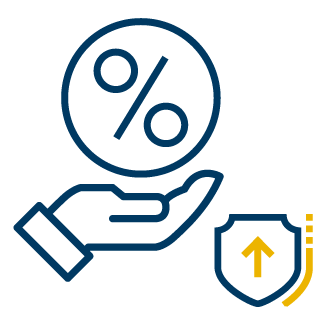Monetary Policy Report - April 2023
The Monetary Policy Report presents the Bank's technical staff's analysis of the economy and the inflationary situation and its medium and long-term outlook. Based on it, it makes a recommendation to the Board of Directors on the monetary policy stance. This report is published on the second business day following the Board of Directors' meetings in January, April, July, and October.
In Colombia, levels of economic activity and inflation remain high. However, it is expected that inflation will gradually begin to ease in the coming quarters and the economy will adjust to more sustainable values from the current elevated levels. The actions adopted by Banco de la República within its commitment to price stabilization and sustainable growth point in this direction.
Inflation would peak in March and start to gradually decline as of the second quarter of 2023, bringing inflation back to the 3% target over the next two years.
- In March 2023, inflation continued to increase, reaching 13.3%. This increase is mainly explained by higher-than-expected growth of perishable food prices, a demand that remains persistently strong, the high inflation of 2022 being used in many cases to calculate price adjustments in 2023, and the aggregate effects of exchange rate increases in recent months, among others.
- Starting in the second quarter, inflation would begin to fall and this decline would continue over the next two years. This would occur as food price increases gradually abate, exchange rate pressures on prices would moderate, and import logistics costs and prices of imported inputs, goods and food would continue to temper.
- Several factors support this expected inflation decline, including lower cost increases measured by the producer price index, decreases in certain measures of inflation expectations of financial market operators or those who monitor the behavior of the economy, and lower observed increases in food prices.
- The cumulative monetary policy interest rate adjustments will contribute to lower excess spending and reduce inflation.

The economy would maintain the high levels of activity already achieved, albeit with lower growth rates, which would contribute to reducing inflation.
- The economy is growing at a lower pace than in the previous year, which is normal after two years of rapid growth that led to high output levels and a significant decline in the unemployment rate, which is at its lowest level since 2018.
- The current high production levels are the result of high spending by both households and businesses (consumption and investment). This spending is excessive relative to the country's income, reflected in the strong growth of imports and the large external deficit seen in 2022.
- The technical staff forecasts economic growth of 1% in 2023 and 1% in 2024, mainly due to moderate consumption and investment.
- These low growth rates would lessen inflation and the external deficit over the next two years.

A heightened policy interest rate is required to ensure price stabilization and contribute to the sustainable growth of the Colombian economy.
- Accordingly, Banco de la República has adjusted its monetary policy interest rate in response to the high demand and inflation.
- From September 2021 to April 2023, the Board of Directors raised the monetary policy interest rate from 1.75% to 13.25%.

For more information, review "Chapter 1: Summary".
Monetary Policy Presentation
Box Index (Only in Spanish)
Box 1 - The Housing Market in Colombia, recent Developments and Outlook
Box 2 - Assessment of Macroeconomic Forecasting Errors in 2022































































